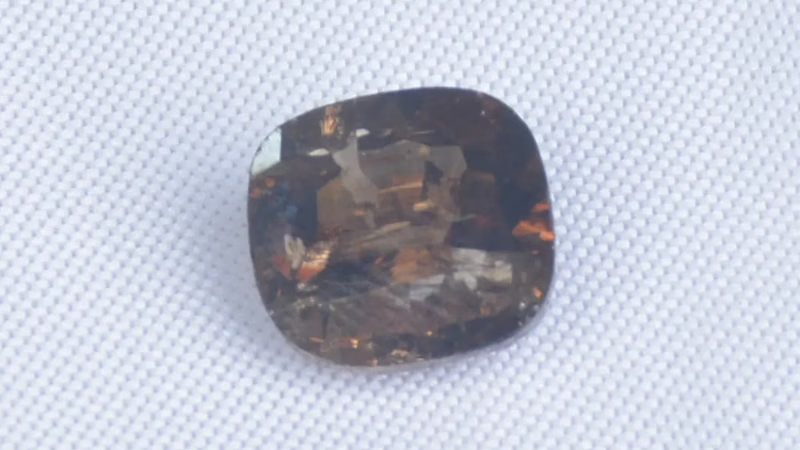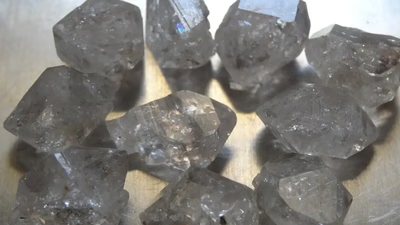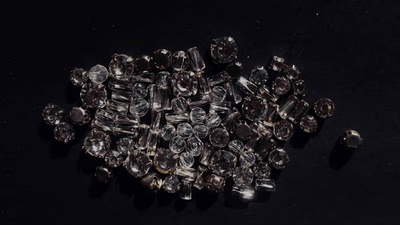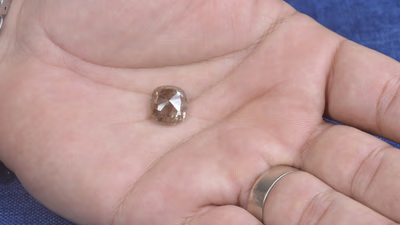
Diamond trade insights and marketplace dynamics in the Middle East.
There have been no significant diamond mines discovered in West Asia (Middle East) thus far. The Middle East region is not known for its diamond deposits. The geological conditions necessary for the formation of diamond-bearing kimberlite pipes or other diamond-rich deposits are not prevalent in this region. Diamond mining is typically associated with specific geological settings, such as kimberlite pipes, alluvial deposits, or lamproite formations. Historically, major diamond-producing regions have been located in Africa, Russia, Canada, Australia, and other countries with suitable geological formations.
So far, economically, there has been no extensive exploration of Iranian diamonds in the country. Recently, diamond particles have been discovered in Sistan and Baluchestan province, which has increased the possibility of diamond mines in Iran. A limited amount of diamond powder and precious stones have been discovered in the White Mountain area of Saravan and Red Mountain in Sistan and Baluchestan province. The Geological Survey of Iran has no positive opinion in this regard but has not denied the existence of diamonds in the eastern regions of the country. According to this organization, the possibility of discovering large diamond mines in Iran with the capacity of large global mines is ruled out. However, some experts are optimistic about the possibility of diamond reserves in Iran, given the similarity of the region's lands with neighboring countries.
It is to mention that in the country of Afghanistan the reserves of diamonds and other gemstones have been discovered. About the similarity of the layer of earth in the East of Iran and Afghanistan, the possibility of discovering deposits of diamonds in Iran as there is. India also from other countries in the region is that the mines of diamonds on the findings. Global Trade of the diamond in terms of the economy is much more valuable than other stones of the precious metals. Yet to be officially and extensively in the field of exploration of mining diamonds in Iran do not have. So far about 14 thousand species of diamonds are identified that in terms of quality and price are not equal.
- The purity of gem diamonds (natural mineral)
- Natural diamond color
- How cutting diamonds
- Large size and the weight of the diamond stone
- Treasures of the diamond in the Middle East
According to the latest findings of the survey in the crust of the earth, the largest deposits of diamonds are hidden. Diamond is net carbon that under the bearing pressure for millions of years form a transparent and brilliant gemstone. The largest reserves of diamonds in the country and the world are accessible. Results obtained from the radio waves and radiography of geo-systems of the earth are that the reserves rich in diamonds at depths of 145 to 240 kilometers lower than the surface of the earth in abundance. The world sits the mountain of diamonds, but the possibility of extracting it will not. In the current science on the world, a way to reach the mountain of buried diamonds is not found there. The largest mining diamonds only bit of the wealth enormous and that on the ground.
- The biggest diamond discovery in the world in the mines of South Africa are including:
- Cullinan diamonds with a weight of 3106 carats were discovered in the year 1905 AD.
- A big diamond with a weight of 995 carats was discovered from the mine in South Africa.
- Diamond with a weight of 530 carats that was well known with the name of Big African Star.
It's worth noting that the Middle East region, particularly the United Arab Emirates (UAE), has become a significant diamond trading and consumer hub. Dubai, in particular, has developed as a prominent diamond trading center and has a thriving jewelry retail sector. The UAE serves as a major marketplace for diamonds, with a focus on trading, cutting, and polishing rather than primary diamond mining.
-

The leading diamond-producing countries are Russia, Botswana, and Canada, with significant contributions from South Africa, Angola, and Namibia. Russia dominates the market with its diamond mining concentrated in the Sakha Republic, primarily managed by Alrosa. Botswana"s diamond industry is largely driven by the Debswana Diamond Company, a collaboration between the government and De Beers. Canada has become a notable player in recent years, with major operations in the Northwest Territories led by Dominion Diamond Mines. These nations possess substantial diamond reserves and established mining sectors that influence global trade dynamics. The article also highlights the historical context of diamonds as valuable commodities and their role in jewelry markets worldwide. While Africa remains a key region for diamond extraction, issues such as low wages and discrimination among local workers persist. The quality of diamonds varies across regions, with Canadian diamonds recognized for ethical practices and high standards.
Australia was once a major contributor through its Argyle mine but has seen production decline since its closure in 2020. "
-

No significant diamond mines have been discovered in West Asia, particularly in the Middle East, due to unfavorable geological conditions. The region lacks the necessary formations for diamond deposits, which are typically found in areas like Africa and Russia. Recent findings of diamond particles in Iran"s Sistan and Baluchestan province have sparked interest, but experts remain skeptical about the potential for large-scale mining operations. While some believe there may be undiscovered reserves due to geological similarities with neighboring Afghanistan, extensive exploration has yet to occur. The UAE has emerged as a key player in the diamond trade, focusing on trading and retail rather than mining. Despite the absence of local mines, the global diamond market remains economically significant, with diamonds valued higher than other gemstones and precious metals. "
-

The United States leads global diamond consumption, with major retail hubs in cities like New York and Los Angeles. While it has some cutting and polishing facilities, the U. S. primarily relies on imports for its diamond supply. India stands out as the largest diamond cutting and polishing center, with significant domestic demand driven by a growing middle class. The United Arab Emirates, particularly Dubai, has emerged as a key player in the diamond trade due to its strategic location and business-friendly environment. Major diamond-producing countries include the Netherlands, Russia, America, India, and Belgium, with Belgium recognized for its high-quality cuts and extensive trading network. Antwerp is noted as the global diamond trading capital, facilitating international transactions.
Other notable markets include China, where rising disposable incomes are increasing demand for luxury goods like diamonds. Despite a downturn in market conditions affecting countries like Iran, which has seen a decline in its consumption ranking, the overall landscape of diamond trade remains dynamic across regions.
-

The diamond market in West Asia is characterized by limited public information regarding large diamonds held by central banks and private collectors. Notable diamonds like the Darya-i-Noor, Noor-ul-Ain, and Taj-i-Mah are part of Iran"s Crown Jewels, showcasing the country"s rich history with precious gemstones. The Darya-i-Noor, weighing approximately 182 carats and known for its pale pink color, is displayed in Tehran"s Treasury of National Jewels. Saudi Arabia and the UAE also possess significant diamond collections, although specific details about individual diamonds remain scarce due to privacy concerns. Dubai has emerged as a global hub for luxury goods, including diamonds, facilitating numerous auctions and private sales. Other countries in the region, such as Kuwait and Qatar, likely have valuable collections but lack publicly available information. The dynamic nature of the diamond market means ownership can change frequently through sales or private transactions. Overall, while Iran"s collection is well-documented, other West Asian nations maintain a level of secrecy regarding their diamond holdings.
-

The diamond trade is evolving due to shifting consumer preferences, particularly among younger generations who prioritize sustainability and ethical sourcing. This trend is driving demand for lab-grown diamonds and customizable jewelry. Technological advancements in diamond synthesis are expected to further influence market dynamics, as lab-grown diamonds become more prevalent. Additionally, the importance of traceability and ethical practices in the supply chain is increasing, reflecting consumer concerns about the environmental impact of mining. Economic factors and geopolitical changes also play a significant role in the diamond economy, with fluctuations in global conditions affecting demand and prices. Iran"s potential for diamond exploration, particularly in ophiolite belts, could reshape its position in the market. The rise of emerging markets like China and India is contributing to increased luxury goods consumption, including diamonds. E-commerce is transforming retail within the industry, providing consumers with convenient access to diamonds online.
As these trends continue to develop, they will shape the future landscape of the diamond trade. "





